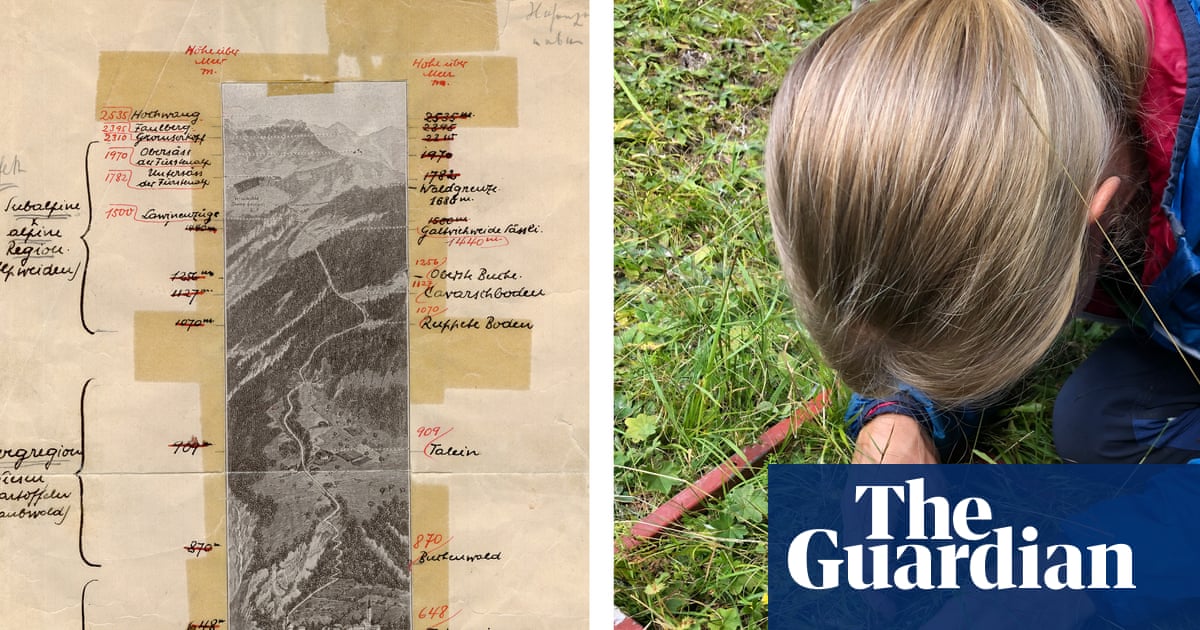
"For two years, a team of Swiss researchers crossed the country by train, car and foot, carrying with them a red frame measuring 30 by 30 centimetres. At 277 sites they placed the frame in the grass and counted all of the plant species within it. The scientists were retracing a path set more than 100 years earlier, when two botanists had done the same thing in exactly the same meadows, long before such plant inventories became common."
"Their research, published in Global Change Biology, found that across Switzerland, the average number of plant species on agricultural grassland has fallen by 26% over the last century. Land use was the main driver for diversity loss, far more than climate change Stefan Widmer, botanist On the Swiss plateau the lowlands where most people live and the most intensive farming takes place the decline reached almost 40%."
A team of Swiss researchers surveyed 277 meadow sites with a 30-by-30-centimetre frame to count plant species, retracing a path set more than 100 years earlier. The sampling compared present plant inventories with pre-agrarian baselines to estimate long-term biodiversity change. Across Switzerland average plant species on agricultural grassland fell by 26% over the last century, with the Swiss plateau experiencing almost 40% decline. Alpine farmland around 2,000 metres, buffered by steep slopes, remoteness and less-intensive management, lost about 11%. Land-use intensification, driven by widespread fertiliser and machinery adoption, was the primary driver of diversity loss, outweighing climate change. Historical systematic biodiversity measurements are scarce, so these resurveys provide a rare baseline of pre-industrial meadow composition.
Read at www.theguardian.com
Unable to calculate read time
Collection
[
|
...
]